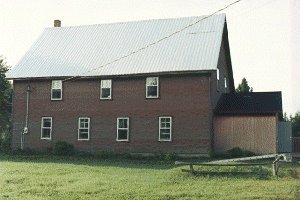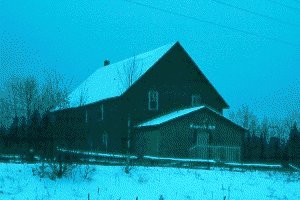
|
Back to Settlements Introduction History Farming Church School Transportation Everyday Life |
Social Life There was a great need for social interaction in the early days of Kynoch's settlement. Entertainment was a form of relaxation after a hard day of work, and one resident remembers that there was never any trouble getting a party going. The Women's Institute were responsible for construction of a community hall, the site of many social functions. The Women's InstituteThe Women's Institute was founded in 1897 by Adelaide Hoodless. A very popular group in the early 20th century, Institute women met together to discuss relevant local issues and worked together to improve local living standards. The Victoria Branch of the Kynoch Women's Institute was formed in 1927 with 15 members. Monthly meetings were held in the homes of members. The Institute raised money by holding social events for the community, and money raised at that time went towards building a community hall. Two acres of land were acquired from Hugh Browning in 1928, and the Women's Institute canvassed the surrounding area for donations to build it in 1929. Robert Dunn supplied most of the lumber needed, and logs for the floor joists were taken from a swamp just south of the hall site, the timbers being hewn by hand. Because the birch used for the floor split easily, holes had to be drilled in the boards for the nails rather than directly hammering nails in. At one time there was a fence all around the hall, but posts were broken off over the years when people backed into them with their automobiles. Once built, the hall became a site for Women's Institute meetings, although they also continued to meet in their homes. The women used the hall to hold fowl suppers, box and pie socials, ice cream socials, social evenings, and dances to raise money for the Institute. Box and pie socials were events where women donated a boxed lunch or pie to be auctioned off to the highest bidder. The buyer of the box then had lunch with its maker. Ideally the bidder did not know who the maker of the box was, but sometimes that was not the case. A fellow buying the box of his best girl could often end up paying a princely sum for the box when others bid him up. 
The Women's Institute also raised money for families in need, donating money, food, blankets and clothing. They donated money to the schools for hot lunches in the winter. They arranged innoculations against diphtheria and dental clinics for schoolchildren. Dances were very common in the early years, with the women hosting one about every two weeks. They also rented the hall out for dances in later years, though these tended to be more rowdy. Quite often a large number of party guests would stay outside and celebrate by their cars. Most times there were not enough guys inside to dance with all the girls. During the Second World War the Women's Institute knitted for the soldiers, and seamen on the Corvette 'Algoma', and sent gifts to local men who were enlisted in the services. They raised money for the Red Cross and Central War Fund, and arranged salvage collections, collecting helpful materials, including woolens and scrap metal, which could be used for the war effort. Change of Ownership
The end of the war marked the gradual decline in the membership of the Women's Institute. Contributing factors in this were that many families were moving out of the community, and the advent of television, which put a damper on community social life. Membership in the Women's Institute eventually dwindled to nothing. Ownership of the hall was transfered to School Section #3 Parkinson and Grassett. When the school closed in 1967, the property fell under the ownership of the Public School Board. The School Board then sold the hall to the Kynoch Community Club in 1968, for one dollar. The Hall was later taken over by the Hall Committee, which is still in existence. The number of events held in the hall are but a fraction of those held there in the early days of the Women's Institute. Return to Top |
Home | Natural Environment | History | Industry | Personalities/Stories | Credits/Team